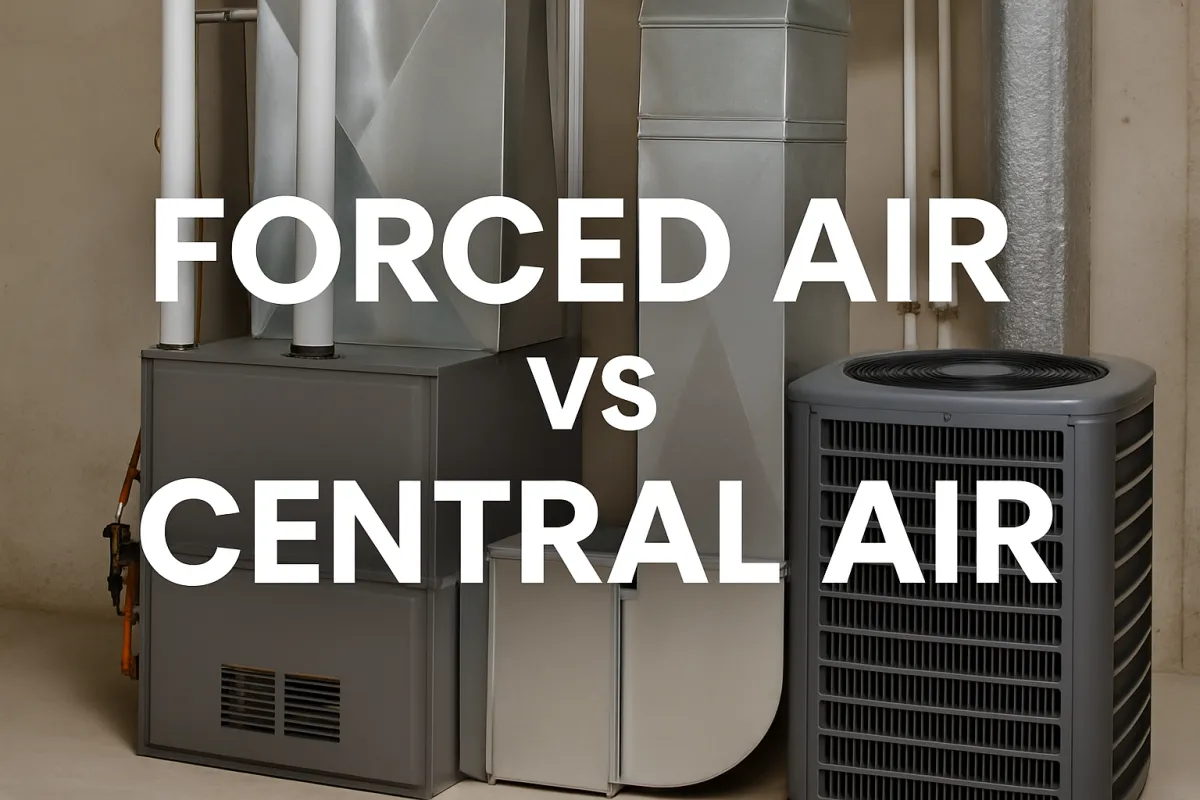
Forced Air vs Central Air: What Manitoba Homeowners Need to Know | Trav's Plumbing & HVAC
If you’ve ever wondered whether your home has forced air or central air, you’re not alone.
The terms get mixed up all the time, and people often use them interchangeably.
But here’s the thing: they’re not the same.
Forced air refers to how heated or cooled air moves through your home, while central air usually refers to air conditioning.
Let’s break it down so you know the difference—and which system makes sense for your Southern Manitoba home.
What Is Forced Air?
Forced air is a heating system that uses ductwork, a furnace, and a blower motor to push warm air throughout your house.
The heat can come from a gas furnace, electric furnace, or even a heat pump.
The key detail is that the air is “forced” through vents and circulated around your home.
Think of forced air as the delivery method.
It’s all about moving air, whether it’s hot in the winter or cool in the summer if paired with an AC unit.
What Is Central Air?
Central air is shorthand for central air conditioning.
It cools your entire home by pulling warm air in, sending it through a refrigerant-based cooling system, and then blowing the cooled air back through the same ducts used for heating.
Here’s where the confusion happens: central air uses a forced air system to deliver cooled air.
So technically, central air is a type of forced air system—but only for cooling.
Forced Air vs Central Air: The Key Differences
So, what’s the real difference between central air and forced air?
It comes down to heating vs cooling.
In short: forced air = the method, central air = the cooling system.
Pros and Cons of Forced Air
Pros:
Warms up a home quickly, even in Manitoba’s long winters
Works with central AC for year-round comfort
Filters and circulates air through ductwork (helps indoor air quality)
Cons:
Ducts can get dusty and need regular cleaning
Uneven heating if ducts aren’t balanced properly
Can dry out indoor air in the winter
Pros and Cons of Central Air
Pros:
Even cooling throughout the house in Manitoba’s humid summers
Quieter and less obtrusive than window or portable units
Boosts home value and long-term comfort
Cons:
Needs ductwork (expensive if your home doesn’t already have it)
Can use a lot of energy if the unit isn’t sized correctly
Higher upfront cost compared to room AC units
Which Is Better for Southern Manitoba Homes?
Here in Southern Manitoba, winters are long and freezing, so heating is the main priority.
A forced air furnace is often the most practical option for reliable warmth.
But summers can be hot and humid, which is where central air makes life a lot more comfortable.
That’s why many homeowners rely on a combination system: a forced air furnace for the winter and a central AC unit for the summer, both using the same ductwork.
This setup gives year-round comfort without needing multiple separate systems.
And with energy bills being a big concern in Manitoba, choosing a high-efficiency HVAC system can make a noticeable difference.
Final Thoughts
The takeaway is simple: forced air is how the air moves, central air is what keeps you cool in the summer.
And for most Southern Manitoba homes, the two systems work together.
If you’re not sure what system you have—or you’re thinking about upgrading—Trav’s Plumbing & HVAC can help.
We serve Southern Manitoba with expert HVAC installs, furnace service, and central AC solutions.
Our team will make sure your system is the right fit for your home, comfort, and budget.
FAQs About Forced Air and Central Air
Is central air the same as forced air?
Not exactly. Central air is air conditioning, while forced air is the duct system that moves heated or cooled air through your home.
Can you have central air without forced air?
No, central air conditioning needs ductwork, which means it uses a forced air system.
What’s more energy efficient in Manitoba?
It depends on your home’s insulation and system efficiency, but pairing a high-efficiency furnace and central AC unit is common in this climate.
Does forced air mean AC or just heat?
Forced air usually refers to heating, but it can also distribute cooled air if your home has central AC connected.
What’s cheaper: central air or forced air?
Forced air furnaces are generally cheaper to install than central AC units. But most homes in Southern Manitoba benefit from having both to handle extreme winters and hot summers.
Do all homes in Manitoba have forced air?
Not all, but many do. Some older homes may use baseboard heating or boilers, but forced air is the most common setup in newer builds.
